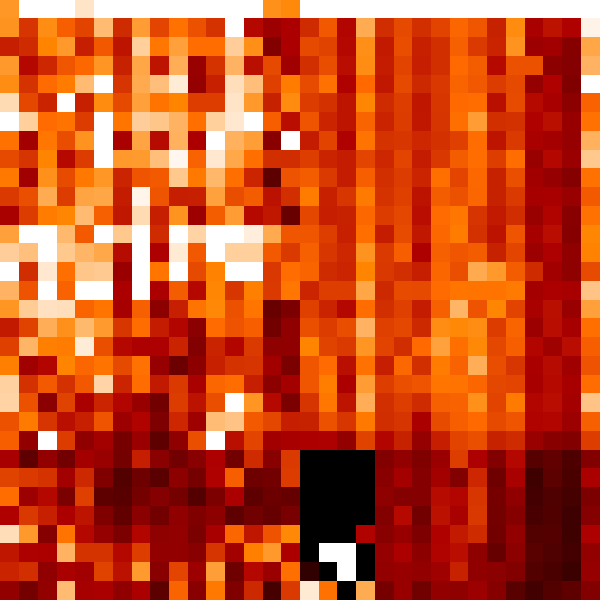
scale = 0 - 0.015
counts = (5.93 +/- 6.23)X10-3

scale = 0 - 0.015
counts = (9.60 +/- 7.63)X10-3
Principal:
Deputy:
Analyst:
AORKEYS:
Last Updated:
The dark data were reduced using the DAT version 2-32. Sensitive cosmic ray detection (mips_sloper comandline switch -q) was used and the electronic nonlinearity correction was not applied. The dark datasets were run through mips_caler. Finally, the dark images for d2a and d2b were created using mips_enhancer. The mips_enhancer was run with the commandline options "-OW -OD -D". The read noise was measured from the read noise datasets using the get_rdnoise.pro program.
The d2a and d2b dark images were examined. As has already been reported elsewhere, side A has a bad readout (ramps offset below bottom rail) and side A has significant problems. The d2a position is darker than the d2b position, as expected. In fact, the d2a position is darker accross the entire array than the d2b position as has been noted in previous reports.
| 70 Dark A (d2a) | 70 Dark B (d2b) |
|---|---|
 scale = 0 - 0.015 counts = (5.93 +/- 6.23)X10-3 |
 scale = 0 - 0.015 counts = (9.60 +/- 7.63)X10-3 |
The read noise were determined for both the d2a and d2b read noise datasets. All pixels on side B basically have a cosmic ray detected in each DCE, it is not possible to measure the read noise on this side using our standard method. Our standard method of measuring read noise is to determine the standard deviation of all the slopes of a pixel without detected cosmic rays. We used an empirical iterative sigma rejection of deviant slopes instead to allow for a measurement of noise on side B. This results in the read noise image in the first colunn of the table below. As can be seen, the noise is quite high on side B and the bad readout of side A. Excluding these regions of the array from the analysis, we get the image and values given in column 2 of the table below. It is possible to do our standard read noise analysis for all but the bad readout of side A. When this is done, we get the image and numbers in column 3 of the table below.
Only d2a data is shown, d2b gives very similiar read noise results, expect for a factor of two higher dark current.
The dark measured in the d2b position should be used for standard calibrations as it is darker than the d2b position. The read noise on side B is much larger than that on side A, probably related to the electronic problems on side B.
The dark calibration image to be used for standard calibrations of campaign H data has been delivered and distributed with the suite of CamH cal files.
No direct actions necessary. Should evaluate if we need to take d2b data regularly at all.